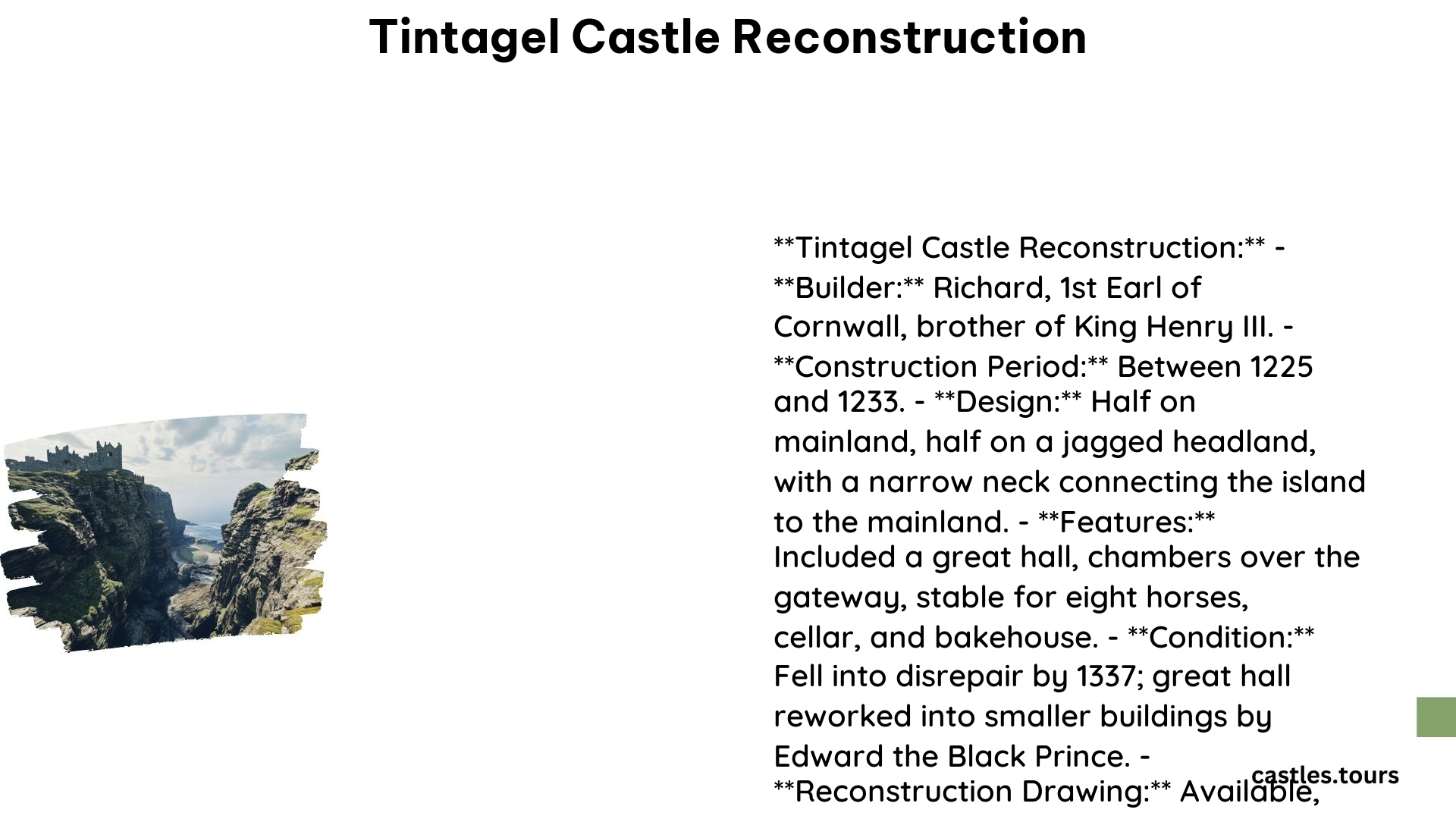What is the Tintagel Castle Reconstruction?

The Tintagel Castle Reconstruction is a detailed representation of the medieval castle that once stood on the rugged cliffs of Tintagel, Cornwall, England. This castle, built in the 13th century by Richard, Earl of Cornwall, was a fortified structure with a great hall, chambers, and defensive walls, showcasing the architectural prowess of the era.
What were the Key Features of the Tintagel Castle Reconstruction?

The Tintagel Castle Reconstruction reveals the following key features of the medieval castle:
- Great Hall: The castle included a grand hall, which served as the central gathering place for the residents and visitors.
- Chambers: The castle had two chambers located over the gateway, providing additional living and administrative spaces.
- Upper Element: An upper element was situated above the Lower Ward entrance, adding to the castle’s defensive capabilities.
- Stable: The castle had a stable that could accommodate up to eight horses, indicating the importance of transportation and mobility during that time.
- Cellar and Bakehouse: The castle also featured a cellar and a bakehouse, essential for food storage and preparation.
How did the Tintagel Castle Reconstruction Evolve Over Time?
- Initial Construction and Use: The castle was built between 1225 and 1233, and it was used for a short period, notably when Earl Richard received his nephew, the Welsh prince Dafydd ap Llywelyn, in about 1242.
- Decline and Reconstruction: However, the castle soon fell into disrepair and decay, with the great hall being in a state of decay by 1337. By the 14th century, the great hall was reconstructed on a smaller scale by Edward the Black Prince, the first Duke of Cornwall.
- Continued Use and Abandonment: The castle continued to be used for the secure keeping of high-status prisoners, but it was largely deserted by the 16th century.
What was the Significance of the Early Medieval Settlement at Tintagel?
During the 5th to 7th centuries, Tintagel was a prosperous and highly organized settlement, likely one of the seasonal residences of the regional king of Dumnonia. Archaeological findings indicate a high-status settlement with trading links to the Mediterranean world, showcasing the importance of Tintagel as a significant trading center during this period.
Visitor Information for Tintagel Castle
- Cost: Tickets for Tintagel Castle can be booked online through English Heritage, with prices varying depending on the time of year and type of ticket.
- Timings: The castle is open to visitors throughout the year, but the hours of operation vary, typically from around 10:00 AM to 5:00 PM.
- Contact: For specific hours and any updates, visitors should check the English Heritage website or contact the site directly at +44 370 333 1181.
